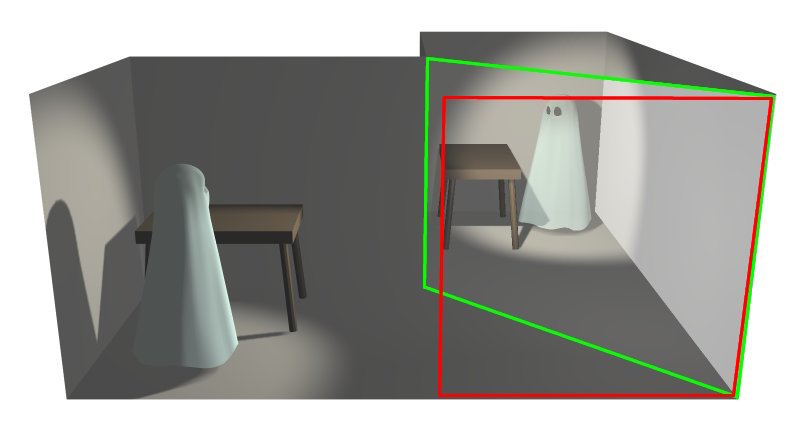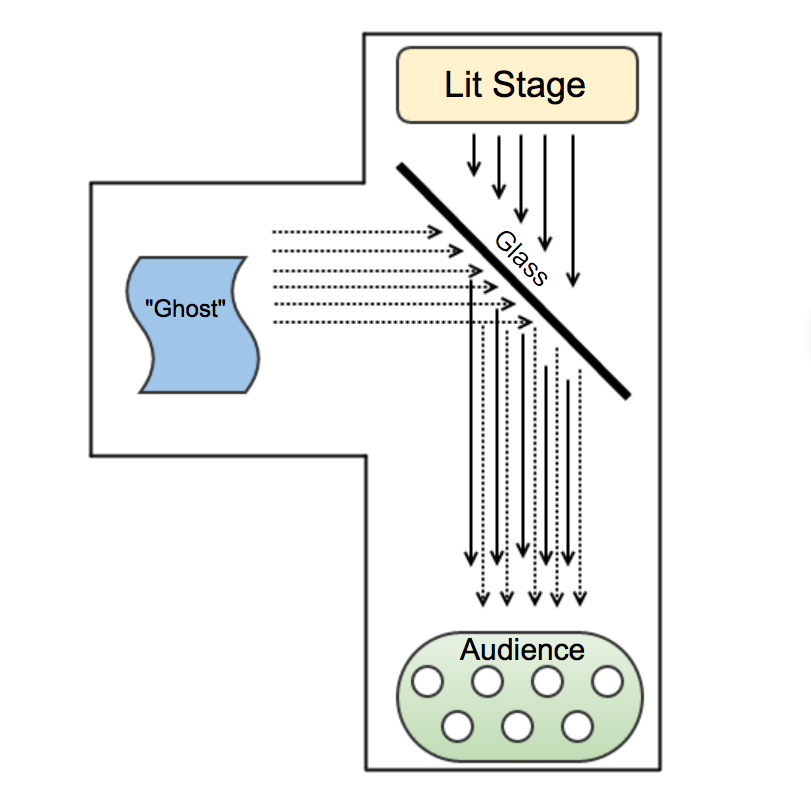
In 2012, guests at a California music festival called Coachella were shocked to see rap artist Tupac Shakur perform onstage. Why? Because the famed musician had been dead for nearly two decades. Viral reactions called the digitized performance a “hologram”, which is actually a misnomer. This stunt is an example of the Pepper’s Ghost optical illusion, which can be explained with ray optics.
Pepper’s Ghost: Historical Trickery and Modern Illusion
In the 1860s, an inventor named Henry Dircks built upon an older Italian optical illusion that manipulated visual effects using glass and light, calling it the Dircksian Phantasmagoria. His effect never gained popularity because it was complicated and expensive, requiring theaters to be completely rebuilt to incorporate the trick.
John H. Pepper, who was lecturing at the Royal Polytechnic Institute in London at the time, came up with an easy way to implement Dirck’s effect in existing theaters using just a sheet of glass. Since Pepper popularized the illusion, it became known as Pepper’s Ghost. Pepper started showing the illusion at theaters around England and Australia, puzzling audiences. One local newspaper even reported that accomplished physicist Michael Faraday returned to Pepper after seeing the illusion and demanded an explanation.
The original Pepper’s Ghost optical illusion involves placing a large piece of glass at an angle between a brightly lit “stage” room into which viewers look straight ahead and a hidden room. The glass reflects the hidden room, kept dark, that holds a “ghostly” scene. When the lights in the hidden room are slightly raised to illuminate the scene, the lights in the stage room are slightly dimmed, and the apparition appears to the audience.

Behind-the-scenes of a basic Pepper’s Ghost illusion. Image by Wapcaplet — Own work. Licensed under CC BY-SA 3.0, via Wikimedia Commons.
Over the years, amusement parks and haunted houses began to adapt different variations of Pepper’s Ghost to achieve the effect of ghostly apparitions in their displays.
Today, through a type of extremely high-quality video projection technology that combines motion capture technology with 3D computer-generated imaging (CGI), “digital doubles” of celebrities and political world leaders can be virtually projected to large crowds by displaying the graphics through a large-scale Pepper’s Ghost contraption. This burgeoning computer-generation technology enables the illusion of moving subjects by combining animation technology with previously recorded digital footage, using a variety of advanced effects and software. This special effect is also commonly used in film.
In the case of Tupac Shakur, a transparent film was suspended at an angle in front of the stage. Footage of the musician, taken from past live performances, was displayed on this film using an off-stage projector. The footage was enhanced and combined with animation software to create a crystal clear, high-resolution video for the performance. Through animation, the video footage was manipulated to make it appear as though Tupac was interacting with the other performers onstage. Instead of the Pepper’s Ghost effect of older times, which was transparent and “ghastly”, the quality of motion graphics make onlookers mistake the projected image for the real thing.
A Ray Optics Phenomenon
Pepper’s Ghost can be explained using ray optics. To start, the glass, or transparent film, used in a Pepper’s Ghost illusion has a different refractive index than the air around it; that is, light in the two media propagates at different speeds. When light reaches a boundary between two materials with different refractive indices, typically some of the light is reflected and the rest is refracted, or transmitted at an angle. The amount of light that is reflected and refracted is governed by the Fresnel equations and depends on the angle of incidence and polarization of the incoming light, as well as the neighboring materials.
Consider the setup used for the classical Pepper’s Ghost illusion, consisting of a stage, an additional room out of direct sight of the audience, and a wall of glass angled between the audience and both rooms. The light from the lit-up stage is refracted as it enters and leaves the pane of glass. The audience can see the stage, but not the glass, just as if they are watching any old stage play. When the lights in the side room are turned on, light propagates from the “ghost” to the glass. Some of the light is reflected by the glass and reaches the audience. The crowd sees rays of light from both the regular stage and the hidden room. This projects the hidden image in a semitransparent, or “ghostly”, manner.

In the scene above, some of the incident rays from the lit stage are refracted through the glass toward the audience, while some of the incident rays from the hidden room are reflected by the glass. The images in the two rooms both reach the audience, creating the Pepper’s Ghost illusion.
Make Your Own Pepper’s Ghost Projector
Just before Halloween, my colleague Matt Milhomme and I built our own Pepper’s Ghost projector with a few old jewel CD cases and a cell phone.
It is pretty simple to replicate our device and make your own Pepper’s Ghost projector if you follow these steps:
- Cut four identical rhombus shapes out of CD cases or another type of clear plastic
- Glue or tape the plastic pieces together into a pyramid shape
- Find a video that is designed to implement the Pepper’s Ghost effect*
- Set your cell phone to play the special video
- Turn your plastic pyramid structure upside down and place it over the center of your cell phone as the video plays
- Don’t forget to turn down the lights!
*We made our own video to play an RF simulation with our DIY Pepper’s Ghost projector. You can, instead, choose from a variety of videos on YouTube that are designed to implement the Pepper’s Ghost effect. The videos are simply made up of four identical animations displayed in a symmetrical square shape, over a black background. You can find a selection of videos to play with your projector if you search for “3D Hologram Video”.
Further Reading
- See 3 ways acoustics phenomena lead to ghost stories: “Is That a Ghost? Vibroacoustic Explanations for False Poltergeists”
- Ars Technica article: “Tupac Hologram Merely Pretty Cool Optical Illusion“
- IEEE Spectrum article: “Digital Actors Go Beyond the Uncanny Valley“




Comments (0)